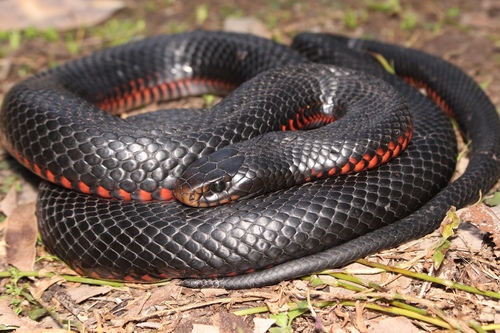
Red-bellied Black Snake
The Red-bellied Black Snake, Pseudechis porphyriacus, dazzles with its striking black and red contrast. Preferring wet habitats, it contributes to ecological balance by controlling pests. Known for its reclusive demeanor, it rarely confronts humans, embodying a fascinating blend of beauty and utility in Australia's wild.
12 years
Lifespan
Length: 1.4 - 1.8 m
Size
Red, Black
Color
45325
Age of Sexual Maturity
Low
Aggression
Least Concern
Conservation Status
Unknown
Population Trend
Characteristics
Pseudechis porphyriacus, commonly known as the Red-bellied Black Snake, is a venomous snake native to eastern Australia. It prefers moist environments like swamps or streams. This snake is recognized by its glossy black upper body and distinctive red or pink belly. It plays a crucial role in controlling pest populations and is known for its shy nature, typically avoiding confrontation with humans.
Distribution Range of the Red-bellied Black Snake
Pseudechis porphyriacus, commonly known as the Red-bellied Black Snake, is native to eastern Australia. It is predominantly found along the eastern coastal regions from southeastern Queensland through to eastern New South Wales and Victoria, extending into southeastern South Australia.
Red-bellied Black Snake's Habitat
Environmental Conditions
The Red-bellied Black Snake typically inhabits moist environments, including wetlands, swamps, riverbanks, and forests. It is often found in areas with abundant water sources and dense vegetation, which provide both cover and prey. The climate in these regions is generally temperate to subtropical, with moderate to high humidity levels.
Ecological Niche
As a semi-aquatic species, the Red-bellied Black Snake is well-adapted to hunting in and around water bodies. It feeds on a variety of prey, including frogs, fish, and small mammals. This snake plays a crucial role in controlling the populations of these animals, thus maintaining ecological balance. It is also known to exhibit some degree of arboreal behavior, climbing trees to escape predators or search for prey.
Copyright @ Nature Style Limited. All Rights Reserved.
 English
English